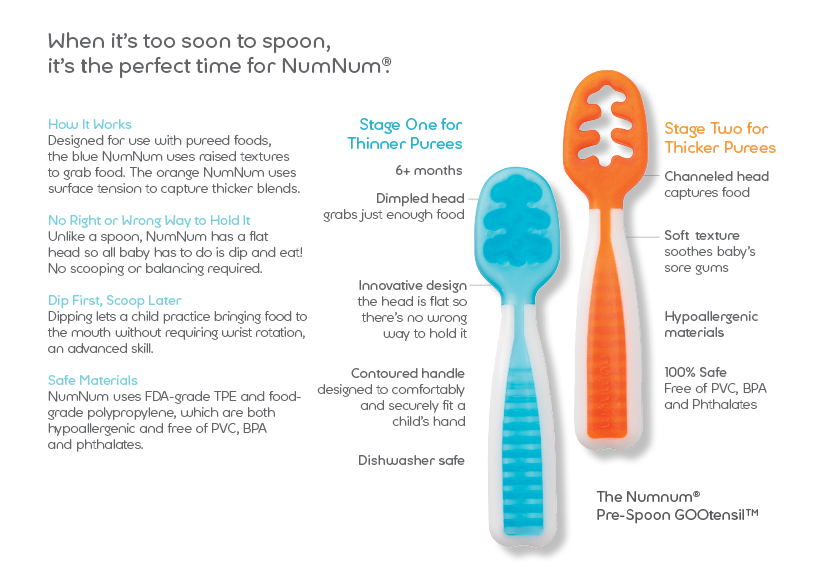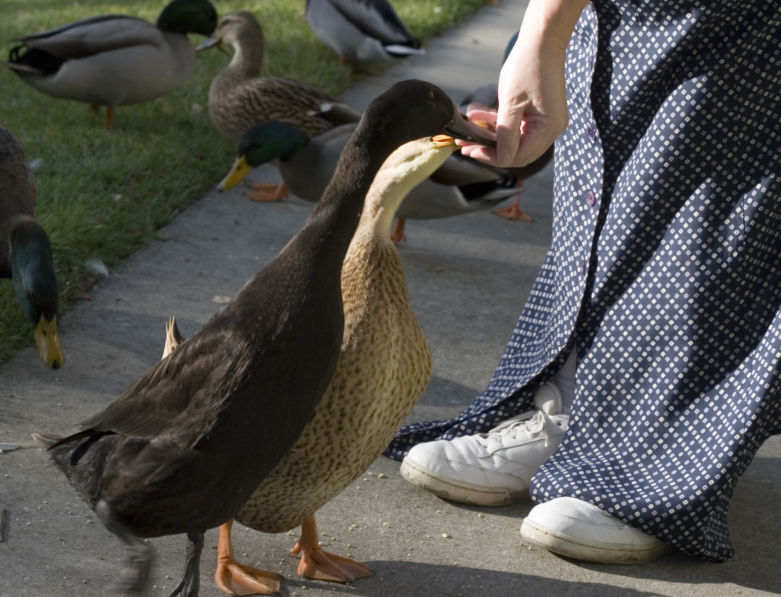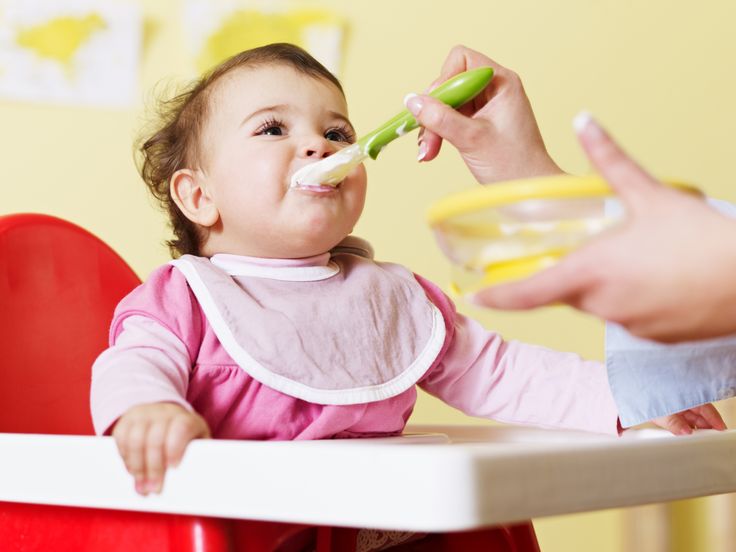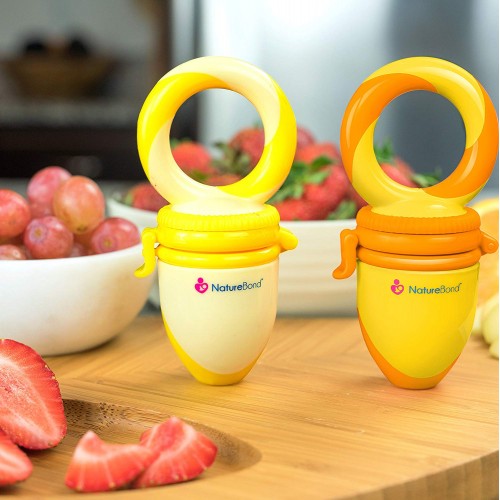First steps baby food
When is a child ready to start solids?
Diving into the world of solid food with your baby is a messy, adorable milestone that, let’s be honest, sometimes feels a little confusing. While some little ones happily slurp down baby cereal at 6 months, others won’t go near a mashed carrot until they’re hitting the 9-month mark — what gives?
The truth is, while solid food exposes babies to new tastes and textures, it’s not even necessary in the very beginning (yes, really).
“While the general recommendation for starting solids is between 4 and 6 months old, solids at this point are more about introducing baby to new tastes and developing oral motor function,” says Dr. Melanie Custer, a pediatrician at Deaconess Clinic in Evansville, Indiana. “Breast milk or formula should continue to be the primary source of nutrition through 12 months.”
Of course, when your baby is eyeballing your bowl of oatmeal every morning, it’s only natural to start wondering when to start baby food. Here, experts and veteran parents weigh in on the dos and don’ts of starting solids, a.k.a. Stage 1 baby foods. Ready the bibs!
What is Stage 1 baby food?
Stage 1 baby foods are single-ingredient foods that are very thin in consistency. You can either buy them at the store or make them yourself, as long as they’re a smooth puree with zero chunks and include just one ingredient so you’re introducing your baby to one new food at a time.
And remember, every child is different and develops at their own individual pace. Check with your child’s doctor for baby food recommendations during the first year.
When to start Stage 1 baby food
According to Custer, the reason it’s recommended that full-term babies wait until 6 months to try solids is because they’re losing iron stores that were built during pregnancy, and iron is important for infants’ brain development.
“Growing babies need all the nutrients they can get — and breast milk and formula are both far superior to solids when it comes to nutrients, including iron,” says Jenifer Thompson, an advanced practice dietician at Johns Hopkins in Baltimore. “It’s important to remember that solid foods are also called complementary foods because their intention is to complement the breast milk and/or formula baby is drinking.”
“It’s important to remember that solid foods are also called complementary foods because their intention is to complement the breast milk and/or formula baby is drinking.”
Thompson also notes that offering solids too early on — prior to 4 months — has been associated with excessive weight gain and adiposity (excess fat) in preschool and older ages.
Signs baby is ready to start solid food
Knowing your baby is ready for Stage 1 foods goes beyond celebrating their half-year birthday. It’s important to look out for developmental and social signals, as well.
“One of the biggest indicators that your baby is ready for solid foods is that they’re showing an interest in what other family members are eating,” says Dr. Kristen Treegoob, a pediatrician at Children’s Hospital of Philadelphia.
If you notice baby staring at your food and opening their mouth or leaning forward if food is ever offered, these are signs that solid foods have piquéd your baby’s interest, according to Thompson.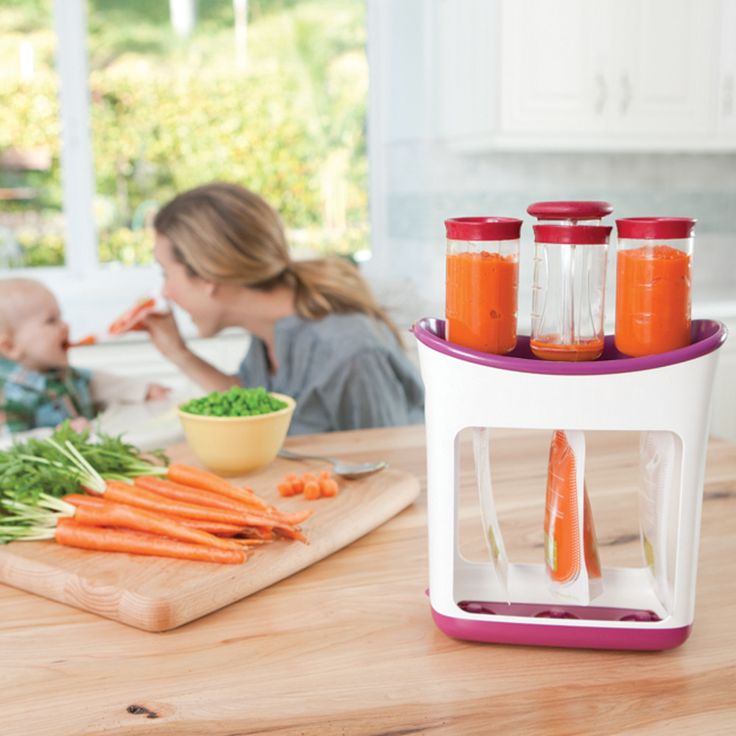
“I knew my son was ready for solids when, at 7 months, he started staring — like, really staring — at all of our food during dinner,” says mom of two Erin Henderson, of Waltham, Massachusetts. “It reached a point where we felt bad eating in front of him!”
Other signs your baby may be ready for solids, according to Custer and Thompson, include:
- They can sit up with little to no support.
- They can hold their head up without being wobbly.
- Their tongue thrust reflex has disappeared. “Before introducing solids, it’s important to make sure your baby can open their mouth for a spoon and accept food off of it, rather than pushing it away with their tongue, which is an involuntary habit until about 4 months,” says Custer.
What Stage 1 baby food to start with
According to Thompson, it’s recommended that early solid foods provide a source of iron, protein and zinc. But remember, you’re complementing your baby’s diet, not revamping it, so it’s OK to get a little creative and go with your gut.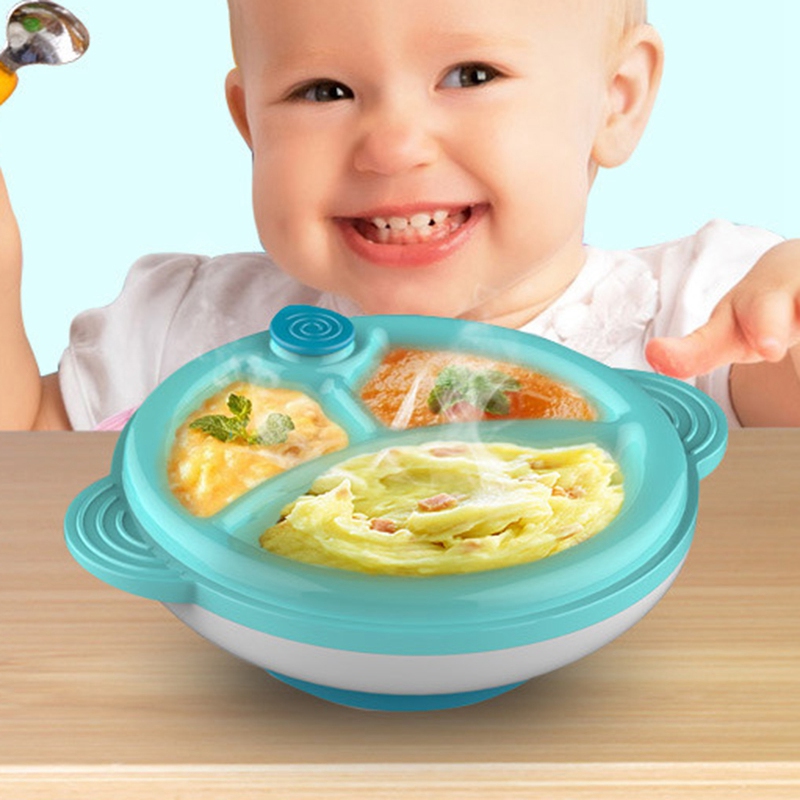
“There is no medical evidence that solid foods must be introduced in any particular order, or that vegetables must be introduced before fruits to ensure that they don’t have a preference for sweets and will it not lead to a dislike of vegetables,” says Thompson.
And once you get going, continue to mix it up.
“There is no one-size-fits-all for solid food introduction, and we typically recommend parents introduce a variety of tastes, colors and food groups in the first few months,” says Treegoob. “That said, the American Academy of Pediatrics recommends that breastfed infants first begin with iron-rich foods, which include iron-fortified infant cereals and iron-rich pureed meats. Formula-fed infants typically get enough iron through formula, so they may have a little more flexibility at first.”
Here’s a list of first foods to try (make sure all are pureed to very thin consistency):
- Bananas.
- Avocados.
- Sweet potatoes.
- Carrots.

- Pureed meats, such as chicken and turkey.
- Butternut squash.
- Peaches.
- Applesauce.
- Grains, such as barley, oats, wheat and rice.
Custer does note that infants should not eat raw or cooked honey until 12 months, as it might contain spores that can cause infantile botulism, a serious illness that can hamper an infant’s ability to move, eat and breathe. For more tips on food storage, our experts weigh in on how long baby food lasts.
How to start Stage 1 foods safely
When your baby first starts experimenting with solids, keep in mind it’s a gradual process, and you’re still a ways off from three solid meals per day. In the beginning, it’s best to think of solids as more of a snack than a meal.
“Babies will often start with just a bite or two at first and advance to three to four tablespoons at a time,” says Custer. “When they’re first starting off around 6 months, they can have solids one or two times a day.”
“Foods should be offered one at a time when babies are starting off with solids,” says Thompson. “Then, wait between three to four days before introducing a new one, so you can properly identify an adverse reaction or intolerance.”
“Then, wait between three to four days before introducing a new one, so you can properly identify an adverse reaction or intolerance.”
Here are a few more tips for feeding your baby:
- Make sure they’re sitting in an upright position, such as in a highchair, to prevent the risk of choking.
- Add a little breast milk or formula to their food. “At first, foods should be just slightly thicker than breast milk or formula to allow the infant to get used to eating,” Custer says. “Foods can get thicker as their eating skills are mastered.”
- Always feed your baby with a spoon. “Unless you’ve been advised by your pediatrician, never put solid foods, including infant cereal, in bottles with or without milk,” says Treegoob.
- Give baby breast milk or formula first. “Both of my babies were more open to trying solid foods in the beginning when they were happy and relaxed,” says mom of two Darcy McConnell of Garwood, New Jersey. “That was always after they had their bottle.
 ”
”
Also, be patient. Starting solids is a learning curve for everyone.
“If your baby turns their head away, spits out food or pushes you away with their hands when you try to feed them solid food, then they are not quite ready,” says Treegoob. “Try again in a few days.”
How baby-led weaning works
A less conventional way to start your baby on real food is baby-led weaning, which forgoes what’s thought of as Stage 1 baby food altogether, as well as a spoon.
“The baby-led weaning approach to introducing solid foods recommends that purees and traditional baby foods be omitted, and to start with finger foods, as well as self-feeding right from the beginning,” says Thompson. “This method may be preferred for some, but should always be discussed with a pediatrician since a possible concern of this method is the risk of choking, which could be minimized with appropriate food choices.”
Proponents of baby-led weaning believe that letting baby pick, choose and explore food on their own will help with appetite control overall (possibly reducing the risk of obesity later in life), as well as promote a taste for a wider range of foods. All of this said, research on baby-led weaning is still fairly scant, so it’s important to discuss it with your pediatrician if you choose to take this approach.
All of this said, research on baby-led weaning is still fairly scant, so it’s important to discuss it with your pediatrician if you choose to take this approach.
Ready for the next stages?
- Stage 2 baby food
- Stage 3 baby food
Stage 1 Homemade Baby Food Recipes for Baby 4 to 6 Months and older.
Stage One Baby Foods – Commonly Offered Stage 1 Baby Foods:
Stage 1 Fruits:
Apples | Avocados | Apricots | Bananas | Mango | Nectarines & Peaches | Papaya | Pears | Plums & Prunes | Pumpkin
Stage 1 Veggies:
Beans (Green) | Carrots | Peas | Sweet Potato | Squash
Stage 1 Grains:
Rice | Oatmeal | Barley
What is a “Stage 1” baby food?
(4) 6-8 Months –
Baby Let’s Begin to Eat“Baby” cereal and soft cooked thinly pureed fruits and veggies should be baby’s first solid food experiences. Single ingredients only and at a space of 4 days apart with introducing each new food. You may skip the cereal and begin with a fruit like avocado or begin with a veggie like butternut squash or sweet potato.
Single ingredients only and at a space of 4 days apart with introducing each new food. You may skip the cereal and begin with a fruit like avocado or begin with a veggie like butternut squash or sweet potato.
Stage 1 Baby Food is a term that applies to baby foods that are highly pureed and strained. These foods are appropriate for babies who are just being introduced to solid foods. The foods in this range are targeted to babies who are between the ages of (4) 6 to 8 months old.
Stage 1 baby foods are thin and runny and are foods that are the lowest on the allergy scale. Stage 1 baby foods are typically those foods that are also more easily digested by a tiny tummy. Some of these foods include, sweet potatoes, butternut or winter squash and carrots. The term “Stage 1” was introduced by the Beechnut Baby Food Company to let parents know that these foods are appropriate for their infants who are just being introduced to solid foods.
There is a growing trend of parents skipping “stage 1” foods that are thin and runny purees. Many parents are turning to a more baby-led weaning approach and are offering soft cooked small bits of age-appropriate foods as they begin to introduce solid foods. Your baby might just be interested in this feeding approach!
Stage 1 Homemade Baby Food Recipes – Cereal, Fruits & Veggies
Rice Cereal- 1/4 c. rice powder (brown rice ground in blender or food processor)
- 1 cup water
Step 1: Bring liquid to boil in saucepan. Add the rice powder while stirring constantly.
Step 2: Simmer for 10 minutes, whisking constantly, mix in formula or breast milk and fruits if desired
Step 3: Serve warm.
Oatmeal Cereal
- 1/4 c. of ground oats (do NOT use instant or Quick Cook), ground in blender or food processor
- 3/4 c.
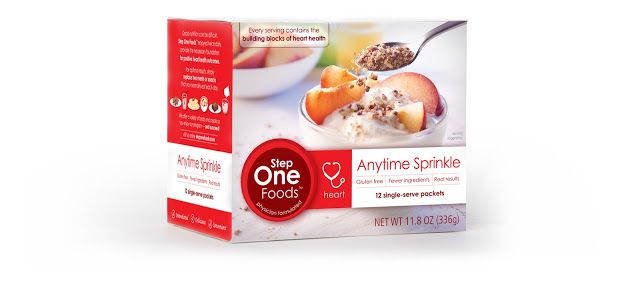 water
water
Step 1: Bring liquid to boil in saucepan. Add the rice powder while stirring constantly.
Step 2: Simmer for 10 minutes, whisking constantly, mix in formula or breast milk and fruits if desired
Step 3: Serve warm.
Barley Cereal
- 1/4 c. ground barley (barley ground in blender or food processor)
- 1 cup water
Step 1: Bring liquid to a boil. Add the barley and simmer for 10 minutes, whisking constantly
Step 2: Mix in formula or breast milk or juice and add fruits if desired
Step 3: Serve warm
Did you know that baby’s first food does not have to be a commercial infant rice cereal? Many pediatric resources are acknowledging the fact that avocado, banana and sweet potato make great first foods for baby. For More Information About Homemade Baby Cereal, visit Our Homemade Baby Cereal FAQ
Feeding Baby Stage 1 Baby Foods
Start out slowly, preparing a tablespoon sized portion of whatever food you have chosen to begin with. Some parents begin offering their babies solid foods by using their (clean and washed) finger as a spoon. They say that this helps their babies take to solid foods because the “new” spoon and the “new” food all at once seem to confuse baby.
Some parents begin offering their babies solid foods by using their (clean and washed) finger as a spoon. They say that this helps their babies take to solid foods because the “new” spoon and the “new” food all at once seem to confuse baby.
You will probably only manage to have baby eat 1/2 of the tablespoon sized portion the very first times you begin solids. Don’t fret if your baby does not “finish” a meal.
Apricot Puree 6-8 months+ (using dried un-sulphured apricots)
Vitamins: A, C, Folate
Minerals: Potassium, Phosphorus, Calcium
- 1 pound dried apricots
- 2 cups of white grape juice, pear or apple juice. Plain water is ok but the puree may be a bit bitter.
Step 1: Bring liquid and fruit to a boil and simmer for 15 minutes.
Step 2: Reserve any left over liquid to use for the puree
Step 3: Place into your choice of appliance for pureeing and begin pureeing.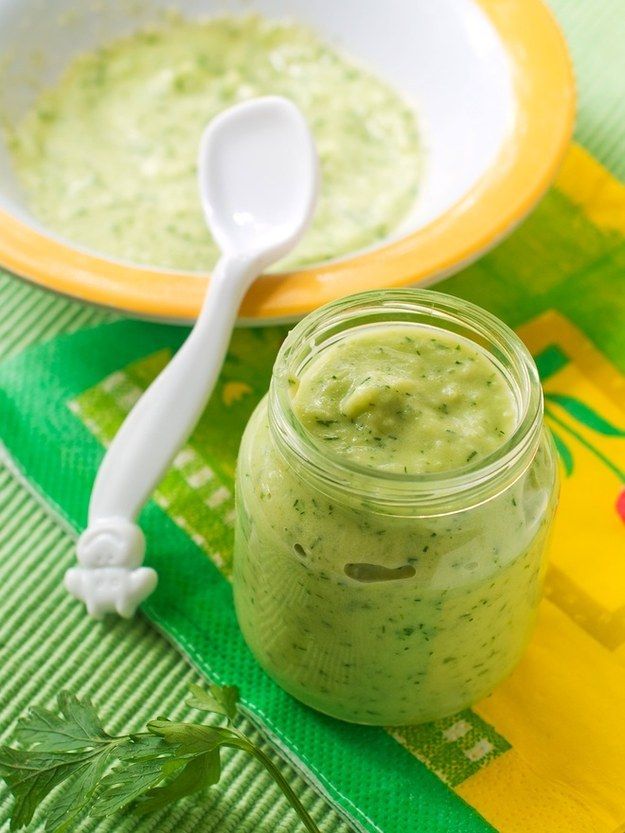
Step 4: Add the reserved liquid as necessary to achieve a smooth, thin puree or
Step 5: Add cereal (if desired) to thicken up
Step 6: Note: puree will not freeze solid, but into slightly soft/slightly frozen cubes.
Have you ever Baked Fruits? If not, I highly recommend it. Baked fruits are naturally sweet, soft and oh so very yummy.
Apples/Applesauce (4)6 months+ Try Gala, Braeburn, Rome or Macs)
Vitamins: A, C, Folate
Minerals: Potassium, Magnesium, Calcium
This recipe is written so that you may use any amount of apples you wish.
Step 1: Peel, core and cut apple into slices/chunks
Step 2: Place slices or chunks into a pan with just enough water to slightly cover apples
Step 3: Boil/steam until tender; be sure to check on the water level and stir, T hat’s It. Easy Peasy.
Step 4: Apples may be mashed with a potato masher to achieve a smooth applesauce consistency. If your masher will not achieve a puree type of consistency, then follow steps 5 – 7
Step 5: Reserve any left over water to use for thinning out the apples
Step 6: Place into your choice of appliance for pureeing and begin pureeing.
Step 7: Add the reserved water as necessary to achieve a smooth, thin puree
Step 8: Add cereal (if desired) to thicken up the
Step 9: Ask your pediatrician about adding some cinnamon for new tastes.
You may also buy an “Adult” jar of Natural applesauce from your local grocers. Make sure you buy Natural Applesauce however. Read the labels if you are unsure. The only ingredients should be apples and water or just apples. A few companies may add ascorbic acid (vitamin C) or citric acid to their Natural Applesauce; this is fine.
Avocado (yes, avocado is a fruit.) (4)6 months+
Vitamins: A, C, Niacin, Folate
Minerals: Potassium, Phosphorus, Iron, Magnesium, Calcium
Step 1: Peel and take out the pit of a ripe avocado – do not cook
Step 2: Cut “meat” out and mash with a fork
Step 3: There should be no need to use a machine as just like bananas, avocados have a very soft consistency and texture. Avocados do not need to be cooked.
Visit the Avocado Baby Food page for more recipes and Information
Baked Apples 6-8 months+
Step 1: Core apple and leave peel on
Step 2: Place a wee bit of butter (if baby is ready for or has had dairy) on the inside of the cored apple (sprinkle a bit of cinnamon in the apple if your desire and if baby is ready for or has had cinnamon)
Step 3: Place in a pan with just enough water to slightly cover apples – about an inch of water
Step 4: Bake in a 400-degree oven for 30 minutes or until tender; be sure to check on the water level.
Step 5: Once baked, either cut apple into little bits and serve as a finger food or mash as directed above in the Apples/Applesauce recipe.
Banana Applesauce Mush (4)6 months+
- 1 apple
- 1 ripe banana
Step 1: Peel, core and cut apple into slices/chunks
Step 2: Place slices or chunks into a pan with just enough water to slightly cover apples
Step 3: Boil until tender; be sure to check on the water level.
Step 4: Apples may be mashed with a potato masher to achieve a smooth applesauce consistency or you can puree in an appliance as shown above
Step 5: Peel a ripe banana and mash in a bowl with a fork (heating in the microwave for approximately 20 seconds will soften the banana up if needed)
Step 6: Add applesauce to the banana and sprinkle with wheat germ* or crushed cheerios*
Step 7: Puree if necessary but mashing with a potato masher will typically get this mix smooth
*8 months+
Back to Top
Bananas (4)6 months+
Vitamins: A, C, Folate
Minerals: Potassium, Phosphorus, Selenium, Magnesium, Calcium
- 1 Banana or however many you wish
Step 1: Peel ripe banana – do not cook
Step 2: Place banana in a food processor/food mill or blender and puree
Step 3: You can also mash the banana in a bowl using a regular fork – heat in microwave for 25 seconds prior to mashing for extra softness
Step 4: Add formula/breast milk or water to thin or add cereal (if desired) to thicken up.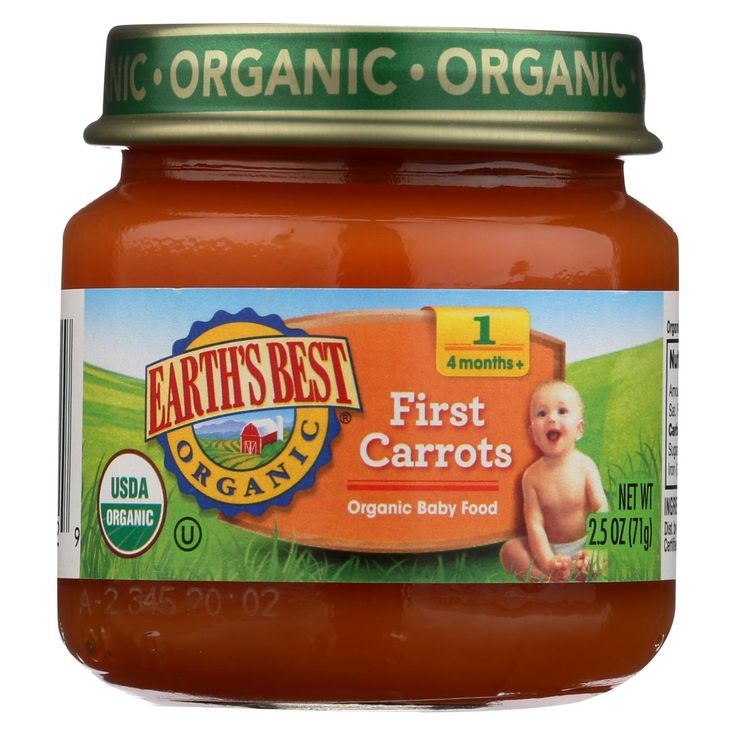
Mango Madness 6-8months+
Vitamins: A (1262 IU in one cup), C, E, K, Folate
Minerals: Potassium, Phosphorus, Magnesium, Calcium, Sodium
- 1 Ripe Mango
Step 1: Peel, de- seed and chunk the mango
Step 2: Place mango chunks in a blender or food processor
Step 3: Add Formula, Breast Milk, or Water and blend or mash until the proper consistency for your Infant is achieved.
How to Cut A Mango:
Cut the mango lengthwise, along the side of the mango pit. You will be cutting off its flesh from one side then repeating the same process on the other side. You will then cut the ends off the mango pit.
Cut the remaining flesh from the pit. Use a small sharp knife peel the skin from the flesh. Dice or cube as desired. It is easier to make your cubes/dices prior to removing the skin. Make sure you don’t cut through it. Once you have made your cube/dice “pattern” simply turn the skin skin inside out and slice the pieces away.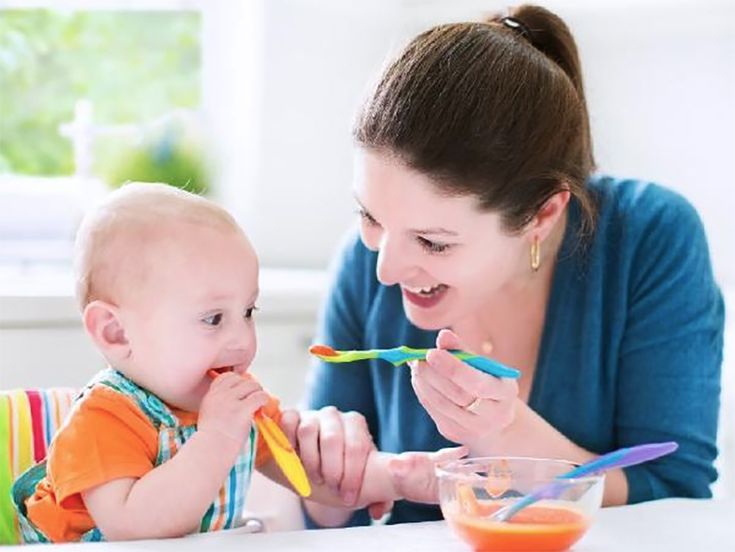
*Mango does not need to be cooked as it is typically introduced at an age where baby can tolerate raw fruits. Mango may be steamed to tender and then mashed if you prefer without harming it.
You may use mango as a great Baby Finger Foods. Simply peel, de-seed and then cut into dices or chunks that are manageable for your baby. You may wish to coat the mango pieces with “cheerio dust”, wheat germ or another cereal “dust” to help baby easily pick up the bits.
Papaya 6-8months+
Vitamins: A, C, Folate
Minerals: Potassium, Calcium
- 1 ripe papaya
Step 1: Peel, de-seed and chunk the papaya
Step 2: Place papaya chunks in a blender or food processor
Step 3: Add formula, breast milk, or water and blend or mash until the proper consistency for your Infant is achieved.
Some parents who have infants with sensitive tummies will give fruits a gentle steaming to help break down the sugars and fibers for easier digestion.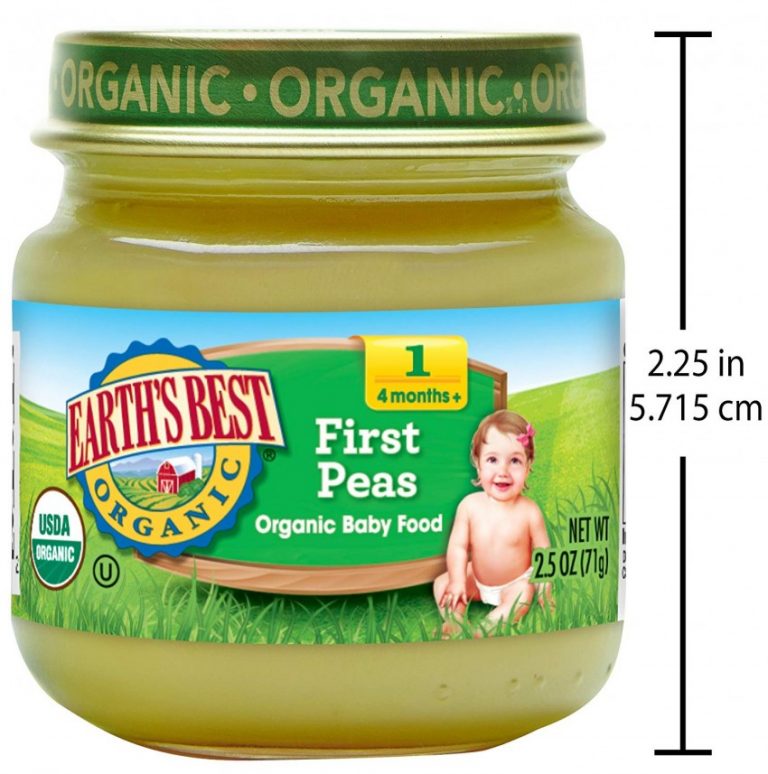 If you feel this is the case for your infant, chunk the papaya and then steam for 5-10 minutes until very soft.
If you feel this is the case for your infant, chunk the papaya and then steam for 5-10 minutes until very soft.
Pears, Plums, Peaches and Nectarines too
Pear (Great for Constipation.) (4)6 months+Vitamins: A, C, Folate
Minerals: Potassium, Phosphorus, Magnesium, Calcium
Step 1: Peel and cut into chunks so as to avoid the little seed portion.
Step 2: Steam gently until tender if baby is under 6 months.
Step 3: Place in a blender/food processor and puree until smooth; you may be able to just use a fork!
Step 4: Use the leftover cooking water if needed but Pears tend to be very runny and watery without adding liquid.
Step 5: Add some baby cereal to thicken if needed.
Plums (4)6-8 months+
Vitamins: A, C, Folate
Minerals: Potassium, Phosphorus, Magnesium, Calcium
- 2-3 ripe plums
Step 1: Peel and pit the plums
Step 2: Cut into chunks
Step 3: Steam until tender in a scant amount of water if baby is under 6 months.
Step 4: Puree using the leftover cooking liquid.
You may need to mix in another fruit as plum purée has a tendency to be rather tart and/or bitter
Peaches (4)6-8 months+
Vitamins: A, C, Folate
Minerals: Potassium, Phosphorus, Magnesium, Calcium
You may steam or bake peaches; these methods work for nectarines, plums and pears as well. I HIGHLY recommend giving baked peaches a try at least once. You will find they are more tasty when baked.
Steam Peaches – Method 1
Step 1: Scrub fruit clean and carve an X into 1 side of the fruit
Step 2: Place X side down in a pan with an inch of water
Step 3: Bring water to a boil and steam until soft and tender
Step 4: Peel skin from fruit and remove pits and/or seeds
Step 5: Move to step #6 below
Steam Peaches – Method 2
Step 1: Peel fruit
Step 2: Pit the peach
Step 3: Cut the peach into dices
Step 4: Steam until soft and tender then
Step 5: Move to step #6 below
Bake
Step 1: Halve the fruit and place “open” side down in a pan filled with 1 inch of water
Step 2: Bake at 400F until soft and tender and/or puckering of the skin appears.
Step 3: Peel skin from fruit and remove pits and/or seeds then
Step 4: move to step #6
Step 5: Reserve any left over water to use for thinning out the fruits
Step 6: Peel off skin then place into your choice of appliance for pureeing and begin pureeing.
Step 7: Add the reserved water as necessary to achieve a smooth, thin puree
Step 8: Add cereal (if desired) to thicken up.
Back to Top
Prunes 6-8 months+
Vitamins: A, C, Folate
Minerals: Potassium, Phosphorus, Magnesium, Calcium
- 1 small bag of dried prunes (try to use unsulphured dried fruits whenever possible!)
Step 1: Soak dried prunes in warm water until they plump up or steam gently.
Step 2: Once plump and tender, toss into food processor or blender and begin to puree.
Step 3: Add liquid without sparing any.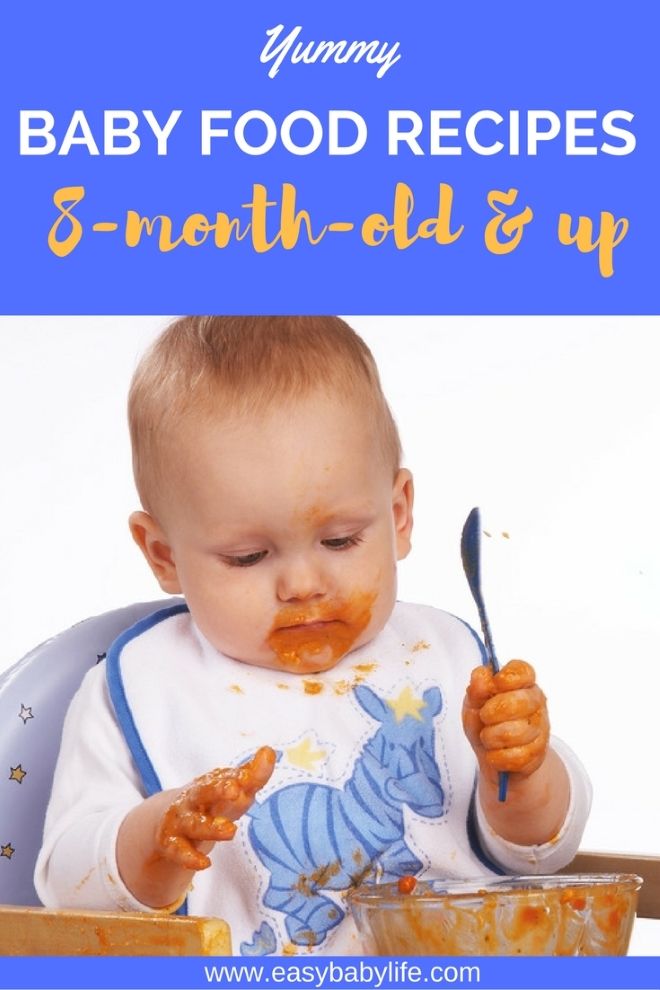 Prunes tend to become a pasty gluey consistency when pureed and the more water you add, the easier it is to puree to a texture your baby will tolerate.
Prunes tend to become a pasty gluey consistency when pureed and the more water you add, the easier it is to puree to a texture your baby will tolerate.
Pumpkin (4)6-8months+
Read more about Pumpkin on the Pumpkin Baby Food page
Vitamins: A (12230 IU in 1 cup.), C, K, Folate, Niacin
Minerals: Potassium, Phosphorus, Magnesium, Calcium, Iron
- 1 medium sugar pumpkin, no heavier than 5 pounds
Step 1: Cut sugar pumpkin (the kind meant to be baked and eaten.) in half, scoop out seeds
Step 2: Place an inch of water in a baking pan, then place the halves “face” down in the pan. Check on water level while baking
Step 3: Bake in a 400 degree oven for 40 minutes or until the “shell/skin” puckers and halves feel soft then scoop squash “meat” out of the shell
Step 4: Place pumpkin “meat” into your choice of appliance for pureeing and begin pureeing.
Step 5: Add water as necessary to achieve a smooth, thin consistency.
Step 6: You can also peel the pumpkin, scoop out the seeds and then cut into chunks and boil/steam until tender (like when boiling potatoes for mashed potatoes) then follow steps 4 and 5.
You may also buy a can of pumpkin from your local grocers. Make sure you buy Pumpkin and NOT Pumpkin Pie mix however. Read the labels if you are unsure. The only ingredients should be pumpkin and water or just pumpkin. You do not need to cook canned pumpkin. You may thin the pumpkin with whatever liquid you prefer and then serve or warm and serve. You may also freeze canned pumpkin in ice cube trays if you wish.
Green Beans (4) 6 months+
(this method may be used for Peas as well)*
Vitamins A, C, K, Niacin, Folate
Minerals:Potassium, Sodium, Phosphorus, Iron, Magnesium, Calcium
Step 1: If using Fresh Beans, snap the ends off the beans and wash the beans. If using Fresh Peas, open the pods and scrape out the peas from the pod. If using frozen of either Peas or Green Beans, cook according to package directions.
If using Fresh Peas, open the pods and scrape out the peas from the pod. If using frozen of either Peas or Green Beans, cook according to package directions.
Step 2: Place fresh beans into a steamer basket in a pan with a just enough water to slightly show through in the basket.
Step 3: Steam until very tender; be sure to check on the water level.
Step 4: Reserve any left over water to use for thinning out the beans.
Step 5: Place into your choice of appliance for pureeing and begin pureeing. It is best to use the setting that makes the finest liquid purees – green bean and pea skins are rather difficult to completely puree.
***Using a blender rather than a food processor or stick mixer might be better as well. ***
6. Add the reserved water as necessary to achieve a smooth, thin consistency
7. You may wish to push the green beans (or peas) through a sieve or mesh strainer to get rid of any remaining skins.
Carrots* 6-8 months+
Vitamins A (19,152 IU), C, Folate
Minerals:Potassium, Sodium, Phosphorous, Iron, Magnesium, Calcium
Step 1: Peel carrots and cut into small chunks
Step 2: Place chunks into a steamer pan with just enough water visible through the steamer basket
Step 3: Steam until tender
Step 4: Do not reserve any left over water to use for thinning out the carrots if baby is under 8 months old as Nitrates may seep into the cooking water
Step 5: Place into your choice of appliance for pureeing and begin pureeing.
Step 6: Add water as necessary to achieve a smooth, thin consistency
*(See Our article on Nitrates)
Garden Vegetable Combo
6-8 months+ after all vegetables have been introduced following the 4 Day Wait Rule
Green Beans, Summer Squash, Peas and Carrots
Step 1: Combine fresh or frozen green beans and peas, summer and/or zucchini squash and small pieces of chopped carrots.
Step 2: Add enough water to just cover the vegetables.
Step 3: Cook until tender, reserving water.
Step 4: Puree vegetables in blender or food processor,
Step 5: Adding reserved water from the vegetables until mixture is of the desired consistency.
Peas
Vitamins A (4533 IU), C, Niacin, Folate
Minerals: Potassium, Sodium, Selenium, Phosphorous, Iron, Magnesium, Calcium, Zinc
Step 1: If using Fresh Peas, open the pods and scrape out the peas from the pod. If using frozen type of either Peas or Green Beans, cook according to package directions.
Step 2: Place fresh peas into a steamer basket in a pan with a just enough water to slightly show through in the basket.
Step 3: Steam until very tender; be sure to check on the water level.
Step 4: Reserve any left over water to use for thinning out the peas.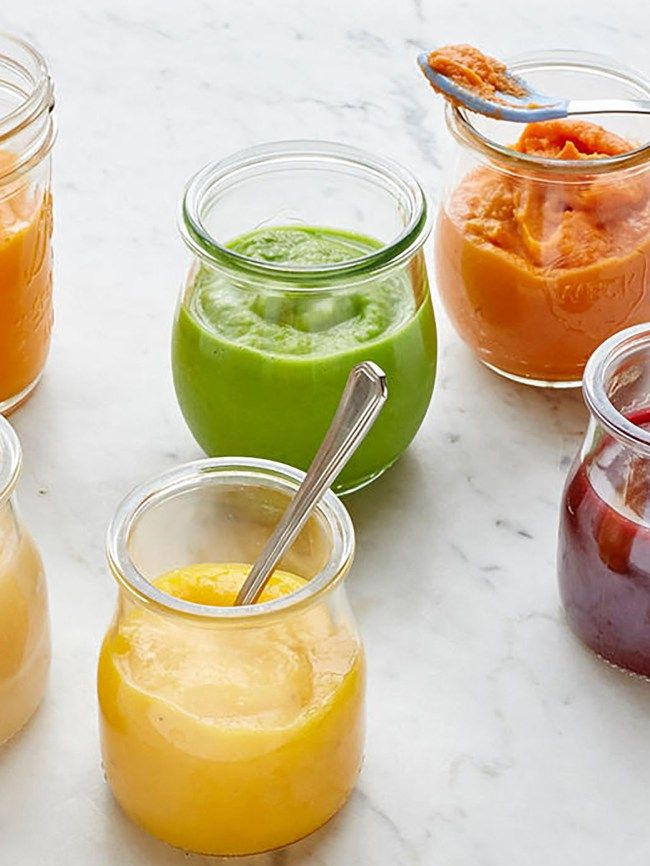
Step 5: Place into your choice of appliance for pureeing and begin pureeing. It is best to use the setting that makes the finest liquid purees – green bean and pea skins are rather difficult to completely puree. Using a blender rather than a food processor or stick mixer might be better as well.
Step 6: Add the reserved water as necessary to achieve a smooth, thin consistency
Step 7: You may wish to push the peas (or green beans) through a sieve or mesh strainer to get rid of any remaining skins
Why can’t I get peas and green beans to puree smooth?
If you are using a Food Processor, try the Blender. The Blender seems to work the best for getting Peas into a more fine puree. Peas and green beans are very hard to get pureed into a very fine, smooth consistency. You can put them in a strainer and work out the “skins” if using fresh or you can use frozen for a smoother consistency and minimal effort to work out the “skins”.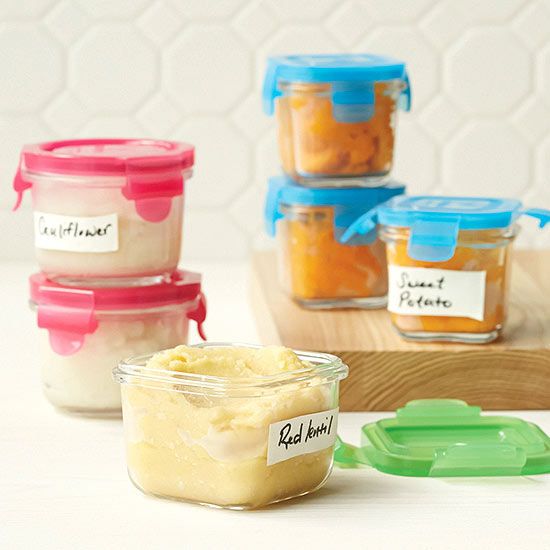
Another method for getting beans and peas smoother is to immediately plunge them into ice cold water once you remove them from the stove top. Once cooled, puree as usual.
You may also use beans/legumes (kidney beans, lentils, split peas etc..) if your doctor says it is OK for baby’s age.
Please keep in mind that you will never be able to achieve the consistency equal to that of the baby food that comes in jars. Some parents choose to leave green beans and peas for later introduction, when baby enjoys texture and is able to eat them as Baby Finger Foods
Squash (Winter – Butternut, Acorn, Hubbard) (4) 6 months+
(nutrient info for squash of all types may be found at the Squash for Baby page)
- 1 medium sized butternut or acorn squash
Step 1: Cut acorn, hubbard, or butternut squash in half, scoop out seeds
Step 2: Place an inch of water in a baking pan, then place squash halves “face” down
in the pan.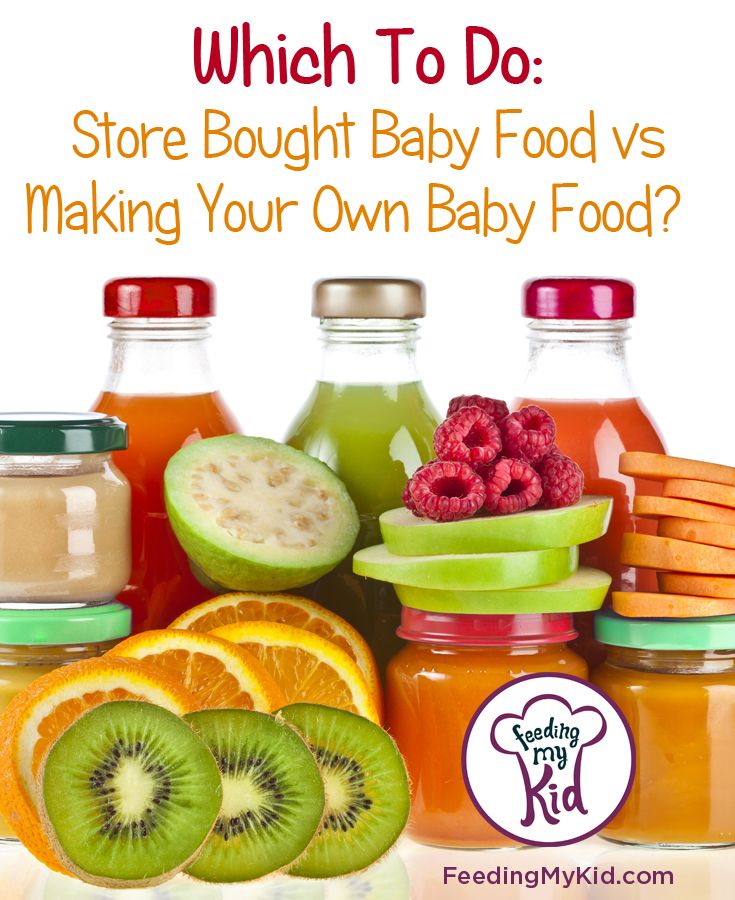 Check on water level while baking
Check on water level while baking
Step 3: Bake in a 400 degree oven for 40 minutes or until the “shell/skin” puckers and halves feel soft then scoop squash “meat” out of the shell
Step 4: Place squash “meat” into your choice of appliance for pureeing and begin pureeing.
Step 5: Add water as necessary to achieve a smooth, thin consistency.
Step 6: You can also peel the squash, scoop out the seeds and then cut into chunks and boil/steam until tender (like when boiling potatoes for mashed potatoes) then follow steps 4 and 5
Squash (Summer/Zucchini) 6-8 months+
nutrient info for squash of all types may be found at the “Tips on Squash” page
- 3-4 small to medium sized yellow squash or zucchini
Step 1: Choose yellow squash or zucchini that are somewhat small in diameter, as these are the most tender.
Step 2: Wash squash thoroughly and cut into small slices or chunks. Do not remove skins.
Do not remove skins.
*You may remove skins however an infant over the age of 8 months old should be able to digest squash puree with skins on
Step 3: Steam until tender then place into your choice of appliance for pureeing and begin pureeing.
Step 4: Add water as necessary to achieve a smooth, thin consistency
Yams/Sweet Potato (4)6 months+
Learn why a Yam really is NOT a Yam
Vitamins A (24,877 mg ), C, Folate
Minerals:Potassium, Sodium, Selenium, Phosphorous, Magnesium, Calcium
Step 1: Wash and poke holes in sweet potato with fork then wrap sweet potatoes in tin foil – do not peel for baking/microwaving (you can also do this in the microwave – only use plastic wrap and cook for 8 minutes on high or until tender).
Step 2: Place in a 400 degree oven and bake for 30 minutes or until soft
OR
Step 1: Peel sweet potatoes and cut into small chunks
Step 2: Place chunks into a pan with just enough water to slightly cover potato
Step 3: “Steam” boil until tender, be sure to check on the water level.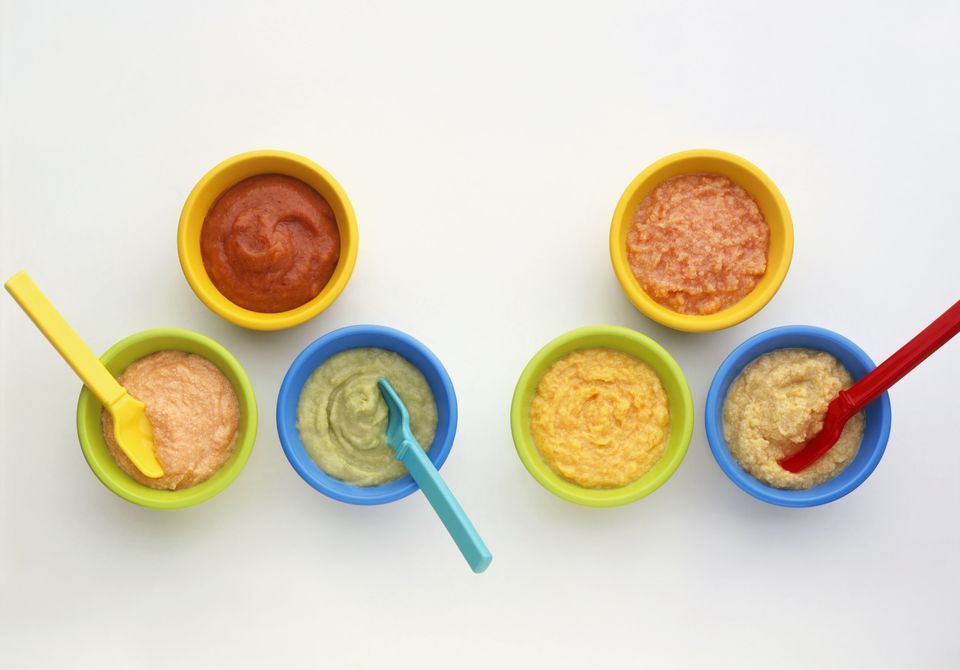
Step 4: Reserve any left over water to use for thinning out the sweet potatoes
Step 5: If you have baked your sweet potato, remove skins and use liquid from your preferred source
Step 6: Place sweet potato into your choice of appliance for pureeing and begin pureeing.
Step 7: Add the reserved water or other liquid as necessary to achieve a smooth, thin consistency
Remember, always consult with your pediatrician regarding introducing solid foods to your baby and specifically discuss any foods that may pose allergy risks for your baby.
These Stage 1 Homemade Baby Food Recipes are age appropriate for those babies who are between 4 and 6 months of age. Many babies start solid foods between 4 months and 6 months. Stage One fruits and veggies we have included are foods that your 4 month old baby who is a beginning eater will be able to tolerate.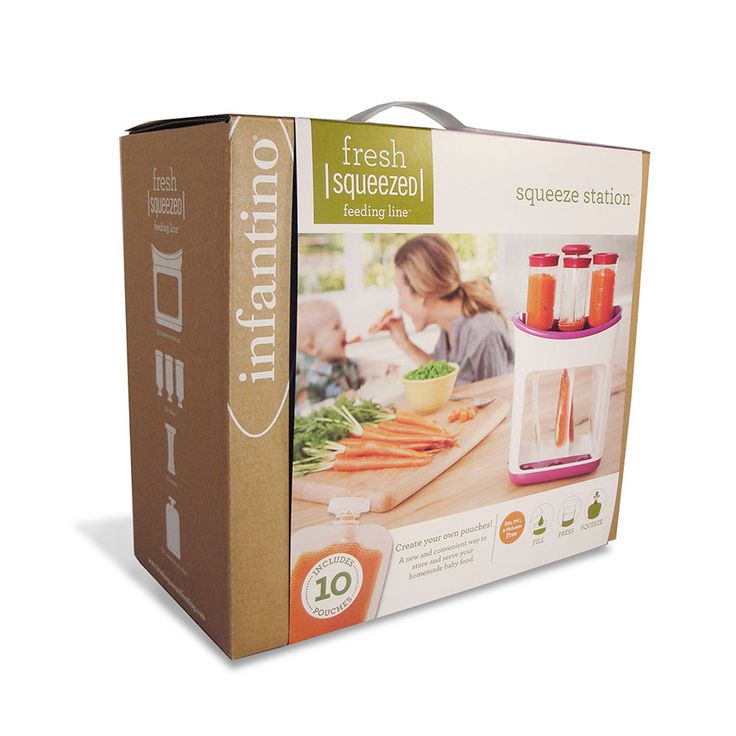 Of course, these recipes are also just yummy for babies who are older as well!
Of course, these recipes are also just yummy for babies who are older as well!
SHARE ON FACEBOOK SHARE ON PINTEREST
Recommendations to Parents "First Steps in Preparing for Kindergarten"
01 February 2022, 09:00
- Society
(Continued. Beginning at #7). How do you prepare your child for kindergarten? Long before your children enter an educational institution, we want to explain what you personally can do to make the period of adaptation for a child in kindergarten less painful.
A little about nutrition
In the first half of the year, the frequency of feeding remains the same as at the end of the first year of life. Up to a year and a half, it is better to feed children five times a day. The amount of food for children from one to one and a half years old should be 240-250 g per meal.
What should I include in my diet?
In the first six months, the child ate exclusively milk formulas or mother's milk, but by the year his diet should be significantly diversified. Make his diet useful, balanced - this is important in the development of a one-year-old child.
Make his diet useful, balanced - this is important in the development of a one-year-old child.
Milk. Dairy products play a major role in a child's nutrition. At this age, he is supposed to have 700 ml of milk per day, taking into account the amount that is used to prepare various dishes. Natural milk can be given to a child only after boiling.
Cottage cheese is an indispensable component of nutrition, it can be included in any of the meals. You can make pudding out of it, add fruit.
Cheese is given grated. It can be used on sandwiches mixed with butter or added to pasta.
Eggs. Only chicken eggs are given to children: either hard-boiled or added to various dishes. Until the age of one and a half, it is recommended to give only hard-boiled yolk, adding it to vegetable purees. After a year and a half, omelettes can be offered, both in their natural form and with various additives, mainly vegetables (potatoes, green peas, carrots, cauliflower).
Meat.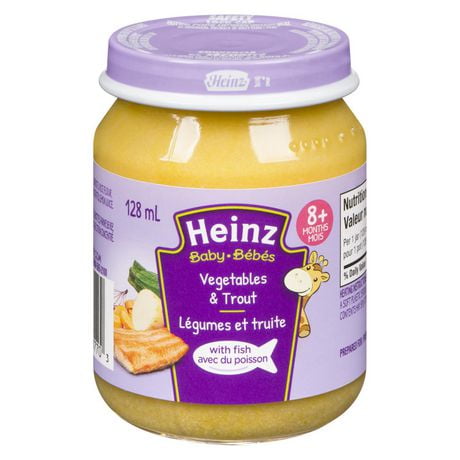 The daily norm of meat for children under three years old is 85 g. Low-fat meats (beef, veal, pork), as well as poultry, are used.
The daily norm of meat for children under three years old is 85 g. Low-fat meats (beef, veal, pork), as well as poultry, are used.
It is advisable to give meat dishes in the first half of the day, because they take longer to digest, and those eaten in the evening unnecessarily excite the nervous system, making it difficult to fall asleep.
Children cook broth for first courses or prepare souffles, meatballs, meatballs or steam cutlets from minced meat. The liver is very useful for the child, it is better to give it in the form of a pate. Garnish is better than vegetable.
Fish. Once or twice a week, instead of meat, the child should be given fish, giving preference to fish fillets or varieties without small bones. But it must be remembered that river (lake) fish with impaired metabolism (exudative diathesis) can cause an exacerbation of the disease in some children.
Fish for children under one and a half years old is cooked in the form of meatballs or boiled for a couple, be sure to wipe.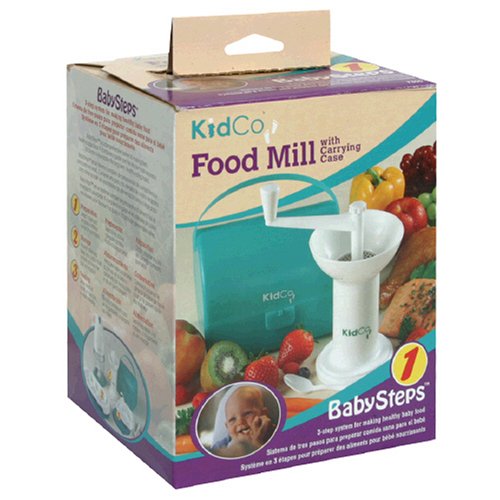 Children can only be given low-fat varieties of fish - hake, cod, sea bass, pike perch. Fish is equivalent to meat in its nutritional properties, but, in addition, it contains trace elements important for the growth and development of the child (iodine, phosphorus, copper, etc.).
Children can only be given low-fat varieties of fish - hake, cod, sea bass, pike perch. Fish is equivalent to meat in its nutritional properties, but, in addition, it contains trace elements important for the growth and development of the child (iodine, phosphorus, copper, etc.).
Vegetable oil is best given raw, adding to vegetable puree and grated vegetable dishes.
Vegetables. It is not recommended to get involved in mashed potatoes because of the large amount of starch that makes it difficult to digest. The daily norm of potatoes is 150 g.
Vegetables include white cabbage, carrots, beets, marrows, pumpkins, green peas, cauliflower, turnips, onions.
Porridge is a very satisfying baby food dish. It should not be given more than once a day. For a child of the second year of life, porridge is cooked semi-viscous. Porridges that require long-term boiling are first boiled in water, and then milk is added.
Pasta. Pasta is used thin and small, cooked with milk, seasoned with butter and cheese.
Honey should be given to children very carefully.
Bread and bakery products. It is useful for children to give both rye and wheat bread. You can give bagels, bagels, cookies.
Sugar and confectionery. In children's food - in tea, milk, cereals, compotes, kissels - you can add sugar, but in moderation. Remember that excess sugar is harmful to the child, as it can contribute to obesity or diabetes. Of the other sweets, marmalade, jams, marshmallows, marshmallows, and jams are recommended.
What should not be included in the diet?
At the age of two children are not given:
Fried foods.
Mayonnaise and ketchup.
Chocolate and chocolates.
Dairy products with flavors, thickeners, colors and other additives.
Wieners, sausages.
Barley porridge.
Spread and margarine.
Duck and goose meat.
Smoked products.
Pickled products.
Mushrooms.
Salted fish and seafood.
Carbonated drinks.
Cakes.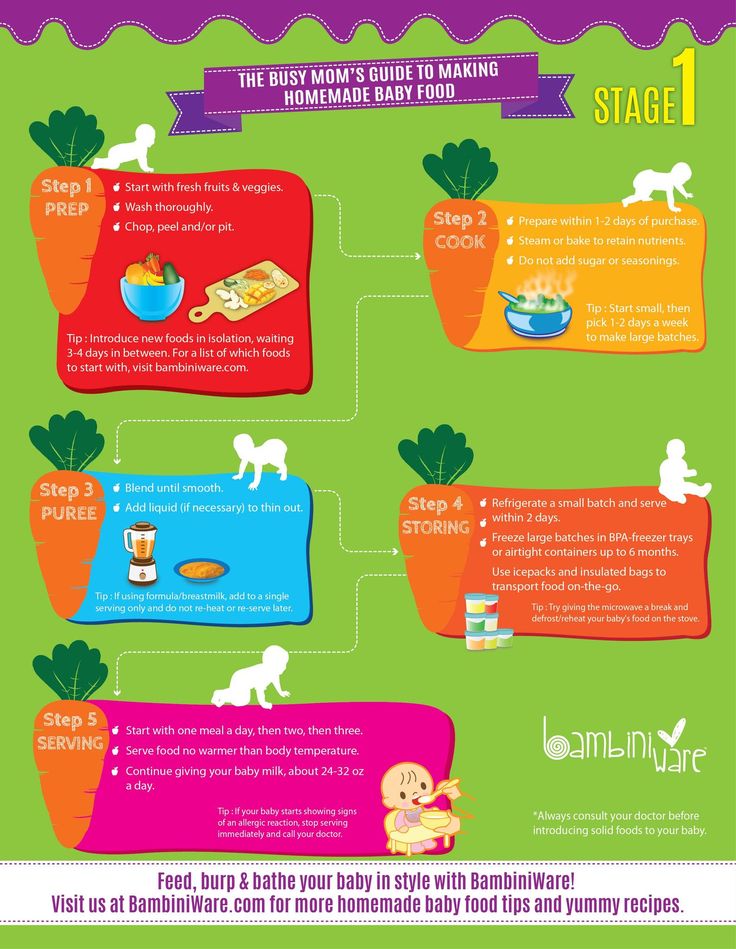
Lozenges (especially rounded, as they easily slip into the child's airways, which is not safe for his life).
How to make a menu?
For breakfast, the child is given a milk dish in the amount of 200 g and a drink in the amount of 100-150 ml, as well as bread with butter or cheese.
For lunch, it is good for a child to eat a fresh vegetable salad or other snack in the amount of 40 g and the first course - soup in the amount of 150 ml. Also, for lunch, the baby is given a meat or fish dish (cutlet) in the amount of 50-80 g and a side dish in the amount of 100 g. In addition, at lunch they give a drink, the volume of which will be 100 ml (compote, jelly).
150 ml of milk or kefir, as well as cookies (15 g) or homemade cakes (45 g) are recommended for an afternoon snack. In addition, fruit or berries should be given for an afternoon snack.
For dinner, the child, as well as for breakfast, is given the main course (porridge, vegetable puree) in the amount of 200 g and a drink in the amount of 150 ml.
Consistency of food. All dishes should be semi-liquid, puree.
It is very harmful to use a pacifier at this age. This subsequently leads to difficulty in chewing food and the rejection of any food other than liquid. Spoon feed your baby! The baby instinctively makes chewing movements before swallowing it, and thereby prepares for the reception of dense food boluses. Children at this age have an average of eight teeth, so chewing skills are actively developing. You will help your child learn to chew if you gradually move from mashed food to food with pieces, that is, you will not puree dishes completely, but leave small pieces. For children accustomed to eating pureed food or bottle feeding (which is even more fraught) at home, the consistency of dishes in kindergarten may be unexpected. If we take into account that during the period of adaptation the child is nervously tense, then in some children this can lead to temporary gastrointestinal disorders - vomiting, abdominal pain, food allergies.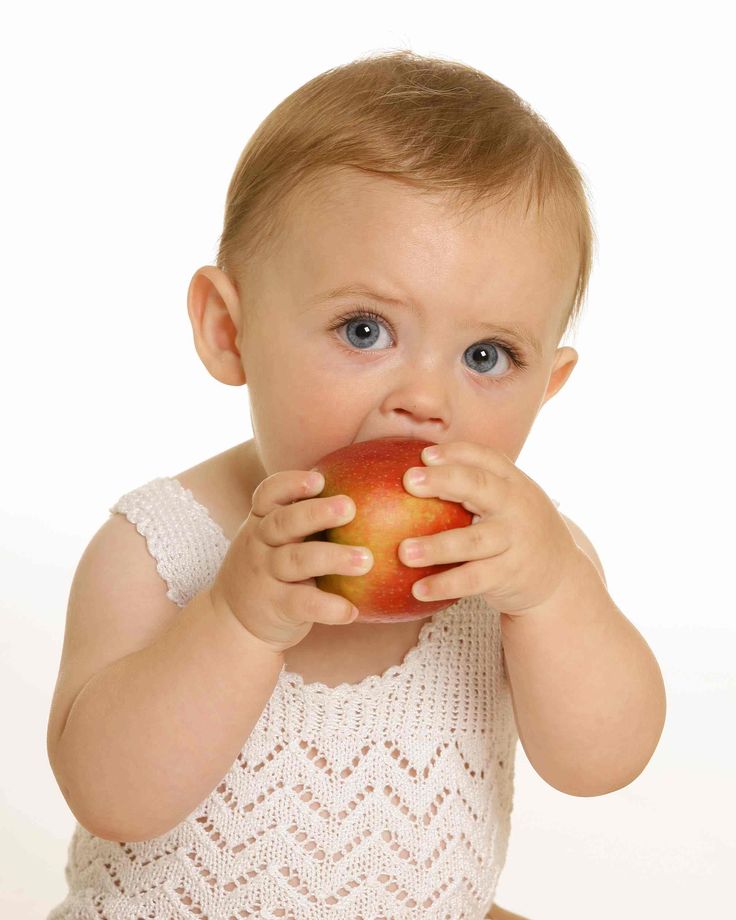
About independence.
By the age of 1 year 3 months, the baby can already eat solid food with a spoon, and at 1 year 6 months, he can eat any food on his own - thick and liquid. Of course, at the beginning of the second year, these will be inept attempts. Help the child take a spoon, give him bread in his hands. Keep teaching him to drink from a cup. Encourage the independence of the child: "Well done, Masha, she eats porridge herself." When feeding, say:
"Good porridge
Yes, a small cup,
Soup is good,
Yes, the pot is small.
Try to develop in your son or daughter in time these independent skills and abilities that are very important for later life.
(To be continued). "
Tags: national project education
Other materials on the tag "national project education"
-
Why is it so important to teach chess to schoolchildren, where to start and how to achieve high results, said the head of the Center "Point of Growth" Valentina Volzhanina
04/09/2022, 09:30
Read more -
(End.
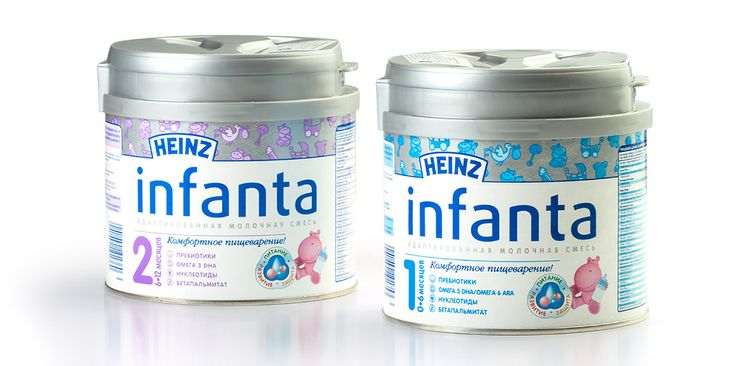 Beginning at Nos. 7, 10, 14). This article is addressed to parents of children born in 2020, which means that next year your children can become pupils of kindergartens.
Beginning at Nos. 7, 10, 14). This article is addressed to parents of children born in 2020, which means that next year your children can become pupils of kindergartens. 02/22/2022, 09:00
Read more -
Continued. Beginning at Nos. 7, 10).
15.02.2022, 11:00
Read more -
(Continued. Beginning at #7). How do you prepare your child for kindergarten? Long before your children enter an educational institution, we want to explain what you personally can do to make the period of adaptation for a child in kindergarten less painful.
02/01/2022, 09:00
Read more -
Two years ago, the Point of Growth Digital and Humanitarian Education Center was opened at Vikulovskaya School No. 2.
Anna NAUMOV
29.01.2022, 09:00
Read more
Toys. Tableware. Body. Baby food, Educational toys and games
Tatyana
Many thanks to the organizer, everything is fast)
irina
Good rattle. Thank you!
Thank you!
Kristina
Thanks for the quick distribution. everything is well packed.
Nina
Thanks to the organizer for the purchase, very fast, cool thing, I recommend
Anna
Thank you to the organizer for the work! Great purchase! Thank you very much for your responsiveness!
Evgenia
Great baby, the child is happy:)
Natalia
Thank you, I received everything, I am very satisfied with the purchase.
victoria
Satisfied with the work of the organizer
Natalia
Cool comforter! Ordered it for a gift. The young mother was satisfied. Purchase is fast. I recommend.
Irina
Everything is fine, I recommend
xenia
I liked the quality. delivery on time.
Tatyana
Thanks to the organizer, the purchase was on time
Other purchases of the organizer
Korea - Shop: Ampoule face serums. 1pc total 36₽
1pc total 36₽
Shipping within 11 days
On soft paws… The New Year 2023 is coming to us
Shipping up to 3 days
On soft paws… The New Year 2023 is coming to us
Delivery from December 4
About purchaseLarge selection of baby items. Caring mothers order the first feeding utensils, bodysuits for the summer, educational toys in our purchase. I am glad to welcome those who looked into my purchase! |

